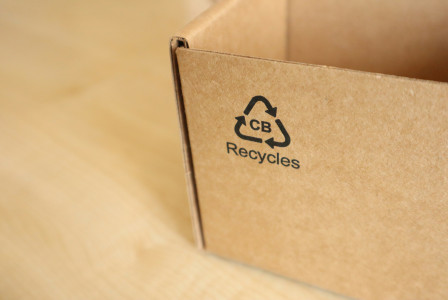Best practices
31 October 2025
Refashion: from compliance mechanism to ecosystem enabler
Best practices
31 October 2025
Social dimension
Sustainable competitiveness
Regulation and public governance
+3 more
Login / create an account to be able to react
-
12

France is a pioneer in Clothing, Household, Linen and Footwear EPR, introducing the first scheme in 2007 and progressively strengthening it with eco-modulation incentives, repair and reuse funding and R&D programs for recycling, aiming to achieve higher circularity in the textile and footware sector. Refashion, the national PRO, now includes over 14,000 member entities and ensures the collection of around one-third of France’s textile and footwear waste (calculated in relation to the products placed on the market each year). Refashion functions as a collaborative platform that connects producers, collectors, sorters, and recyclers, fostering the synergies essential for sector-wide change.
Refashion
Topics
Albania
Armenia
Austria
Belgium
Bosnia and Herzegovina
Bulgaria
Croatia
Cyprus
Czechia
Denmark
Estonia
EU-27
Finland
France
Georgia
Germany
Greece
Hungary
Iceland
Ireland
Italy
Kosovo
Latvia
Liechtenstein
Lithuania
Luxembourg
Malta
Moldova
Montenegro
Netherlands
North Macedonia
Norway
Poland
Portugal
Romania
Serbia
Slovakia
Slovenia
Spain
Sweden
Switzerland
Türkiye
Ukraine
Other
Academic / Research and VET Institutions
Business Support Organisation
Company with 250 or more employees
Cluster Organisations
Consumer Organisations
Cultural and Heritage Organisations
Destination Management & Marketing Organisations
EU Institutions
Financial Institutions and Investors
Industry Associations and Chambers of Commerce
International Organisations
Local Authorities
Media / Journalist Organisations
National authorities
Networks and Federations / Confederations
NGOs / Non-profits
Notified Bodies
Regional Authorities
SMEs (a company with less than 250 employees)
Social Economy Entity
Trade Unions
Other
-
Transition Pathway's building blocks
-
-
Social dimension
-
Sustainable competitiveness
-
Regulation and public governance
-
-
Industrial ecosystems
-
-
Textile
-
-
Textiles ecosystem areas
-
-
Fibres, yarns and fabrics
-
Waste management, reuse and repair
-
Share
France, a pioneer in Extended Producer Responsibility management and circularity
Among the 28 EPR (Extended Producer Responsibility) schemes for textiles recently mapped by the Global Fashion Agenda, the one in France is the oldest. In 2007 the country became the first to adopt EPR as a policy tool to tackle textile waste from products at the end of their life cycle.
The 2020 AGEC law strengthened this framework with eco-modulation incentives, funding dedicated to repair and reuse , as well as R&D programs to boost recycling. More recently, in June 2025, the Parliament tabled a draft bill introducing financial penalties on ultra-fast fashion items through eco-modulation which has not yet been formally adopted.
Refashion, a capillary and widespread waste collection
Refashion, the PRO (Producer Responsibility Organisation) covering apparel, footwear and household linen, has been active for more than 18 years. Although France allows individual compliance in EPR management, 95% of the market players are registered members of the Refashion collective compliance scheme, testifying to the successful uptake of the organisation. As of 2025, Refashion counts over 14,000 members, and 610 partnerships with local authorities.
Through its network of sorting and collection partners - mainly from the social economy - Refashion ensures coverage of one textile drop-off point per 1,400 inhabitants on average. In 2024, it collected around one third of the textile and footwear waste generated annually in France (calculated in relation to the products placed on the market each year), equivalent to almost 300,000 tons of end-of-life clothing, footwear and household linen (additional data available here). Around 200,000 tons of this waste stream were sorted.
Beyond waste management
Initially born to financially support the collection and sorting of discarded textiles, the French EPR scheme has progressively evolved to address waste prevention and achieve higher circularity through local reuse, repair and recycling.
Refashion is funded through eco-fees paid by producers. These resources are allocated according to the EPR specifications: for collecting, sorting, and processing used textiles and footwear (29%) and to fund incentives that reward sustainable design practices (20%). Additionally, Refashion supports repair programmes and reuse initiatives (23 %). Beyond compliance administration, Refashion manages mandatory waste prevention plans, funds initiatives on traceability improvement for sorting operators activities, and operates the Refashion Recycle platform, which connects circular supply chains. It also allocates funding for research and development activities on automated sorting and recycling (5%).
Incentive for ecodesign in practice
Refashion applies an incentive scheme that encourages circular design through monetary benefits. These can be linked to product durability, environmental certifications (GOTS, Oeko-Tex Made in Green, European Ecolabel), or the incorporation of recycled materials. Conversely, recyclability penalties target metalloplastic fibres and electronic components, with amounts detailed by product line.
Conclusion
While EPR schemes alone cannot solve systemic issues such as overproduction or infrastructure bottlenecks, Refashion demonstrates how a PRO can go beyond compliance to drive innovation, cooperation and investment towards circular clothing household, linen and footwear. France’s experience provides valuable lessons for the upcoming EU-wide textile EPR implementation.
Comments (0)
See also
Breaking the silence: how data is transforming gender equality in textile factories
- Categories
- Sustainable competitiveness Regulation and public governance Textile +11 more
The Discover Natural Fibres Initiative: a model for textile industry collaboration
- Categories
- Infrastructure Investments and funding R&I, techniques and technological solutions +6 more
Embedding circular thinking in product design: IKEA guidelines
- Categories
- Sustainable competitiveness Textile Fibres, yarns and fabrics +2 more




